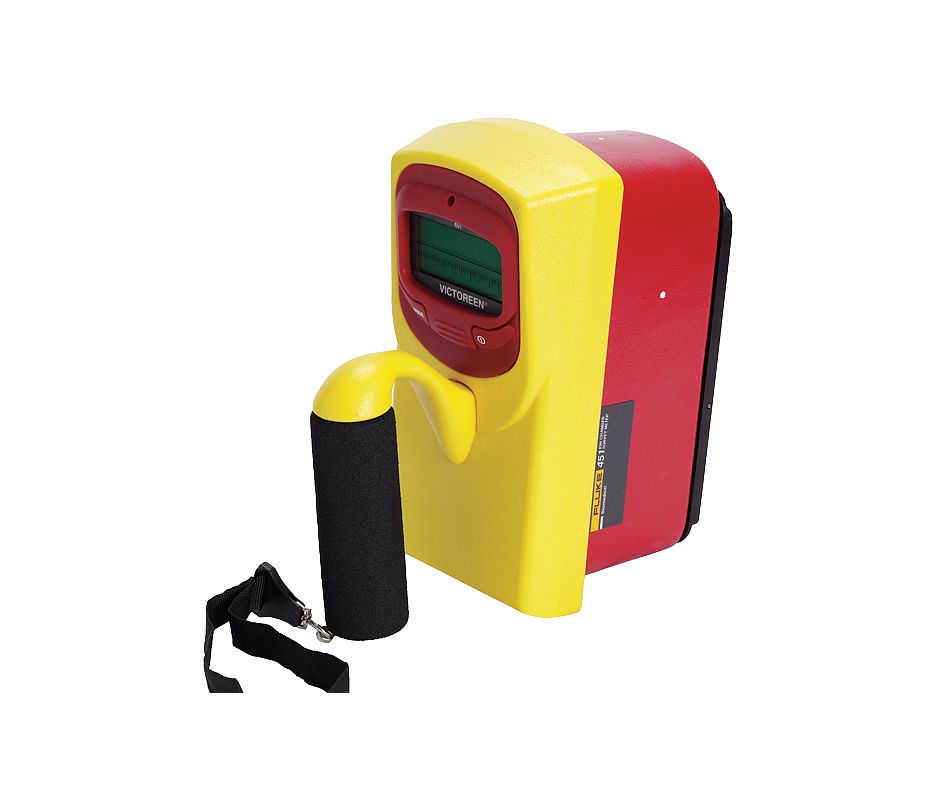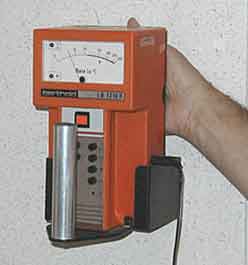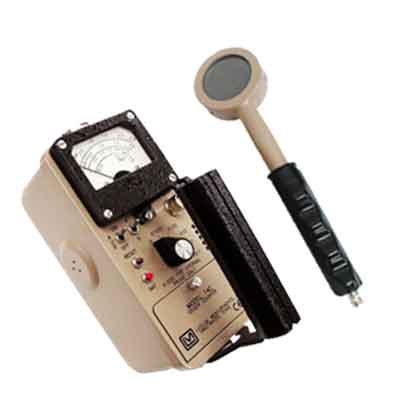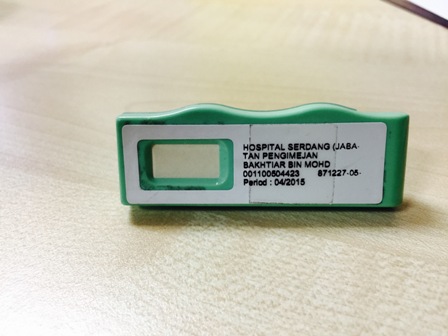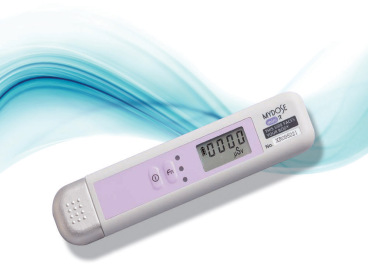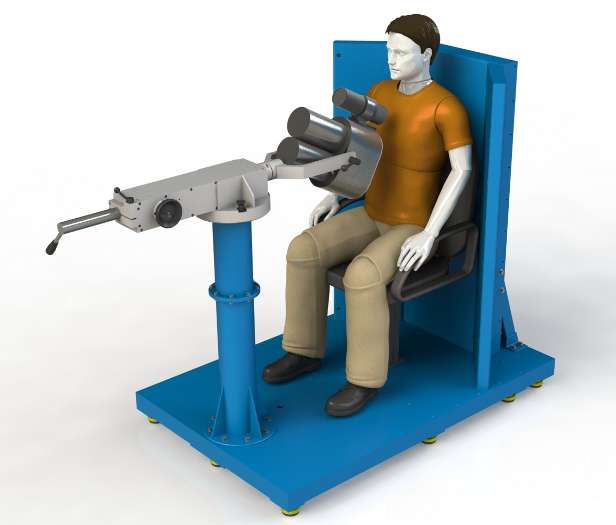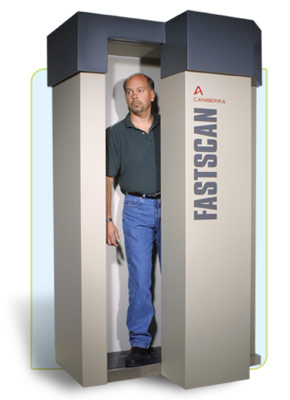1.0 INTRODUCTION
Radiation cannot be sense directly by all five human senses. High radiation dose receive by human may damaged the cell tissue which then leads to organ failure and result in death (deterministic effect). The stochastic effect is the one that should be paid attention as it is probabilistic in nature where the occurrence is proportional to dose received. If a person is exposed to radiation for a long period of time (years to decades), the chances to get cancer or leukaemia increases. By virtue of this, and the characteristic of radiation which cannot be seen, smelled and tasted, justified the importance of radiation monitoring especially to those who work with radiation.A proper selection of monitoring instrument must be given consideration for an effective monitoring programme.
The objectives of radiological monitoring are:
- To asses radiation exposure situation and personnel exposure in compliance with regulatory requirement.
- To identify abnormalities of radiation exposure in work places.
- To verify the effectiveness of radiation protection programme in workplaces.
International Atomic Energy Agency (IAEA) Safety Glossary – Terminology Used in Nuclear Safety and Radiation Protection (2007) stated that the term monitoring is the measurement of dose or contamination for reasons related to the assessment or control of exposure to radiation or radioactive substances, and the interpretation of the results (http://www-pub.iaea.org/)
There are three types of radiological monitoring:-
- Area monitoring
- Workplace monitoring
- Personnel Monitoring
Personnel monitoring and workplace monitoring executed in order to control the occupational exposure to radiation worker while area monitoring is aimed to control the radiation exposure to public.
1.1 Area and Workplace Monitoring
Any workplaces of which contain radioactive sources or irradiating apparatus are required by the regulation to be monitored regularly to ensure the working environments are safe for worker. Area monitoring is important to establish the classification of working area accordingly. The area monitoring will cover both radiation and contamination. In some places of which radioactive aerosol (small particle) are present, surface airborne contaminations monitoring will be included as area monitoring.
Classification of area is essential as the areas will be divided into three different areas, namely clean area, supervised area and controlled area. Different area requires different administrative control. For instance, clean area can be access by anyone (public) while supervise and controlled area are restricted areas which can only be accessed by radiation worker. By virtue of that, it is important to know the radiation dose rate at the respective area and hence the requirement of area monitoring.
2.0 MONITORING INSTRUMENTS
2.1 Type of Radiation Detectors
Radiation detectors are classified based on their medium of interaction with radiation, which are gas-filled, liquid-filled and solid state type. Gas-filled detector is the name given to a detector which operated when charged particles produces ionization in a gas-filled chamber. There are three types of most commonly used gas-filled chamber:-
- Ionization chambers
- Proportional counters
- Geiger-Muller counters
The main difference of the detectors lies on
- The type of gas used
- The required pressure to maintained the gas within the chamber
- The voltage level which need to be maintained between the walls of the chamber and the central electrode.
Figure 1: Fluke 451P ionization chamber survey meter
Source: www.flukebiomedical.com
2.2 Ionization Chamber
Ionization chamber detector is the most suitable detector to measure photons, beam and also can be used to monitor alpha, beta and neutron particle through some modification. It is less sensitive compared to Geiger-Muller counter but can be practically used in high counting rate sources. It has a very good energy dependence characteristic.
2.3 Proportional Counter
Proportional counter is the type of detector which operates in pulse mode. The operation mechanism is based on the gas multiplication phenomenon of which the secondary ion pairs will amplify the charge within the gas. It is an important instrument in detection of spectroscopy of low energy X-ray and been widely used in the detection of neutrons.
Figure 2 : Proportional Counter
Source: nucleas.iaea.org
2.4 Geiger-Muller Counters
Geiger-Muller counter is a very useful detector tool in monitoring low-energy beta and gamma radiation due to its high sensitivity. It is the oldest of all radiation detectors and commonly use in monitoring radioactive contamination and for searching of lost radioactive sources. It is however not suitable for high radioactivity source as it cannot give accurate reading due to its long “dead time”.
Figure 3 : Ludlum 44-9 Geiger-Muller Counter
Source: nucleas.iaea.org
3.0 PERSONNEL MONITORING
3.1 External Exposure Monitoring
Personnel who works in Controlled Area and Supervise Area (selectively) shall be provided with individual personnel monitoring as stated in Basic Safety Radiation Protection (2010). Radiation worker received occupational exposure due to sources outside the body or irradiating apparatus known as external exposure. Exposure to radioactive material deposited in the body as a result of intake of radioactive contaminant known as internal exposure. Radiation workers are required to wear a device known as personnel dosimeter which is use to measure the radiation dose received while working within radiation area.
External exposure monitoring is required to personnel who worked with irradiating apparatus and all type of radioactive sources. The most commonly used personnel dosimeters are film badge, Thermoluminescent Dosimeter (TLD) and pen dosimeter/pocket dosimeter. However, film badge and TLD are obsoletes and will no longer in use in the near future. It will be replaced by Optically Stimulated Luminescent Dosimeter (OSLD) and Radiophotoluminescent Dosimeter (RPL).
|
Figure 4 : The RPL which is used in Serdang Hospital. |
Figure 5: Digital Pocket Dosimeter/Pen Dosimeter which is used in Serdang Hospital. |
|||
3.2 Internal Exposure Monitoring
Personnel who work at workplaces or environment of which the present of unseal sources or contamination is confirmed are required to undergo internal exposure monitoring. Working with contaminated environment and improper way of working with unsealed sources might lead to intake of the radioactive material which results in internal contamination. The ingress of radioactive materials into the body is through ingestion, inhalation, skin and open wound. In order to assess the intake of radioactive substance in the body, a special instrumentation is used.
Two common methods used to measure internal contamination are direct method and indirect method. Direct method commonly used in whole body counter while indirect method in bioassay. Direct method is a method where the radiation dose is measured directly using measuring instruments. In the other hand, indirect method will require samples namely urine, faeces or sweat. These samples will be analyse in laboratory to obtain the required data.
3.2.1 Bioassay Method
Bioassay method is an indirect method used to measure the intake of alpha, beta and low energy gamma emitters. Laboratory radiation counters or spectrometers are used to measure and determine the types of radionuclides and their concentration in urine, faeces and sweat excreted by the body. The samples are collected over a period of time to get a more accurate measurement. Once they have obtained the data, it will be converted to radiation dose using mathematical model of human being. In the conversion process, standard human biological parameters will be used.
The initial concentration of the radionuclide can be traced back based on the measured concentration. It will be based on the time of intake by using standard excretion rate of human being. The estimated amount will then be compared with the allowable Annual Limit of Intake (ALI) stipulated in the Basic Safety of Radiation Protection, BSRP (2010).
3.2.2 Whole Body Counter
Whole Body Counter is a measuring device which uses direct method in the measurement of radioactive substances in the body using spectrum analyzer and counter. The system is highly sensitive and able to measure weak transmitted gamma radiation from radionuclide which deposited in a particular body organ.
The most commonly used types of whole body counting system are the chair type and shielded room type. The chair type has a shape of chair with three detectors positioned at different location. The positions of the detector will allow optimum measurement of radionuclide deposited in three different critical organs, namely lung, thyroid and stomach. The system is provided with sufficient thickness of shielding material on the detector and the subject itself in order to minimize the interference of background radiation.
Figure 6: whole body counter –chair type
Source: www.radek.ru
The shielded room type as the name implies is a room which shielded on all sides, results in a low background counting room. Inside the room is equipped with gamma spectrometry system complement with gamma analysis software. Subject has to be inside the room while they are doing the measurement. The concentration of the radionuclide in organs or body obtained from the measurement will then converted to radiation dose using mathematical model of human beings followed by the same data analysis as in bioassay method.
Figure 7: whole body counter –shielded room type
Source: www.canberra.com
4.0 SUMMARY
As a conclusion, radiation monitoring is very important to ensure the environment and workplace is safe and complies with the regulation requirement. Furthermore, it also plays a very important role in ensuring the radiation dose received by radiation worker does not exceed the permissible annual dose limit. Selection of radiation detector is very important as the accuracy of measurement depends on the radiation range of energy and type of radioactive sources used. Radiation monitoring also allow us to identify any abnormalities of radiation exposure in workplace which indicate the possibility of radiation leakage or lost of radiation sources. Besides, radiation monitoring will help us in verifying the effectiveness of radiation protection programme in workplace. If suspicious reading is found, corrective measures can be taken to ensure the dose received by radiation worker is as low as reasonably achievable.
References
- Ismail Bahari, Mohd Yusof Mohd Ali.(2010).Managing Radiation Safety –Guide for Radiation Protection Officers.
- Abdul Khalik bin Haji Wood, Azali bin Muhammad.(2006). Handbook of Radiation Protection
- Husin Wagiran.(1997). Prinsip Asas Pengesanan Sinaran
- Ahmad Termizi Ramli.(1993).Biofizik Sinaran
| Last Reviewed | : | 19 February 2016 |
| Writer | : | Baktiar bin Mohd Ramadhan |
| Accreditor | : | Adzlin Hana bt. Mohd Sari |


